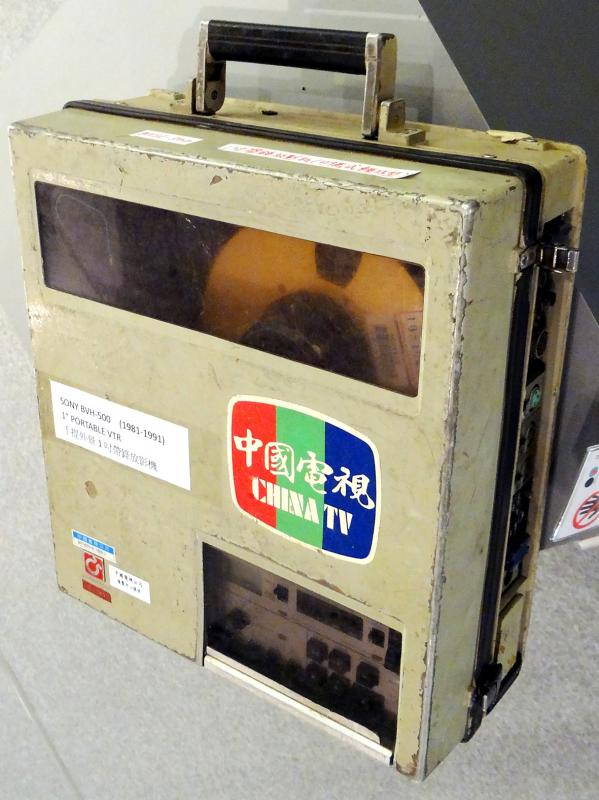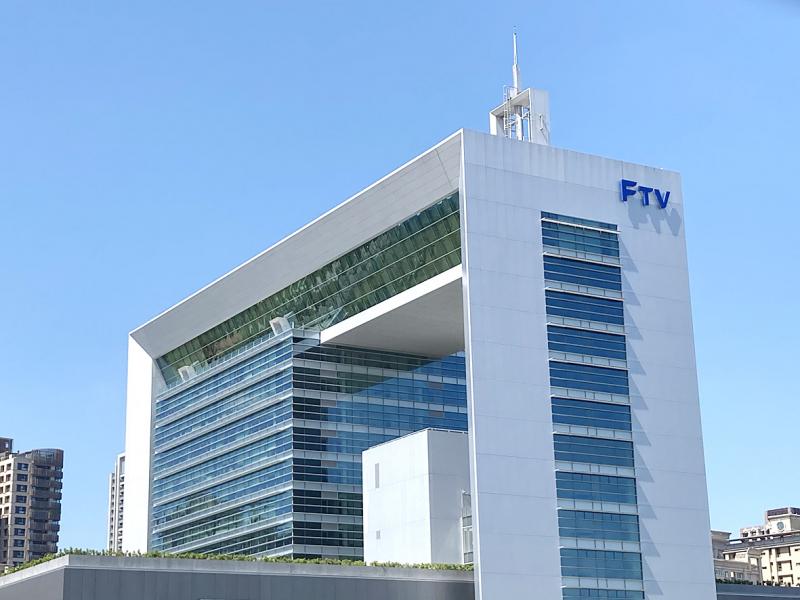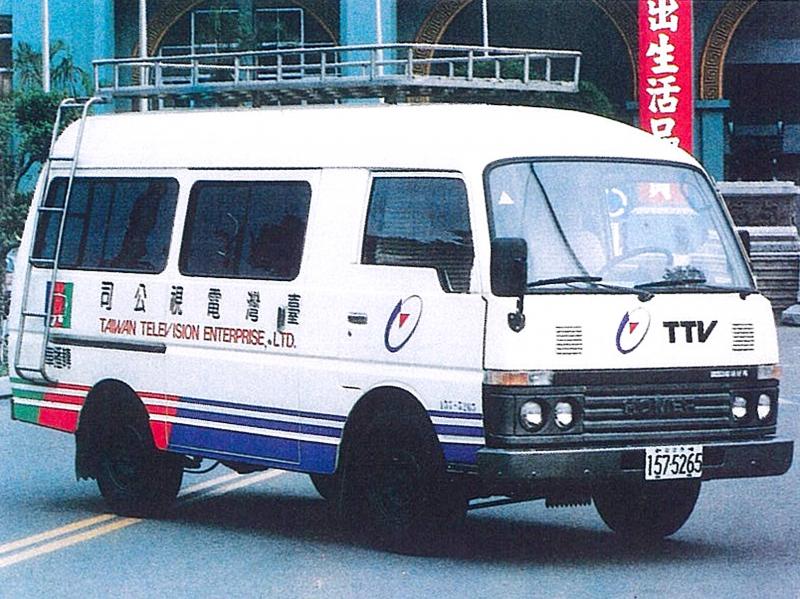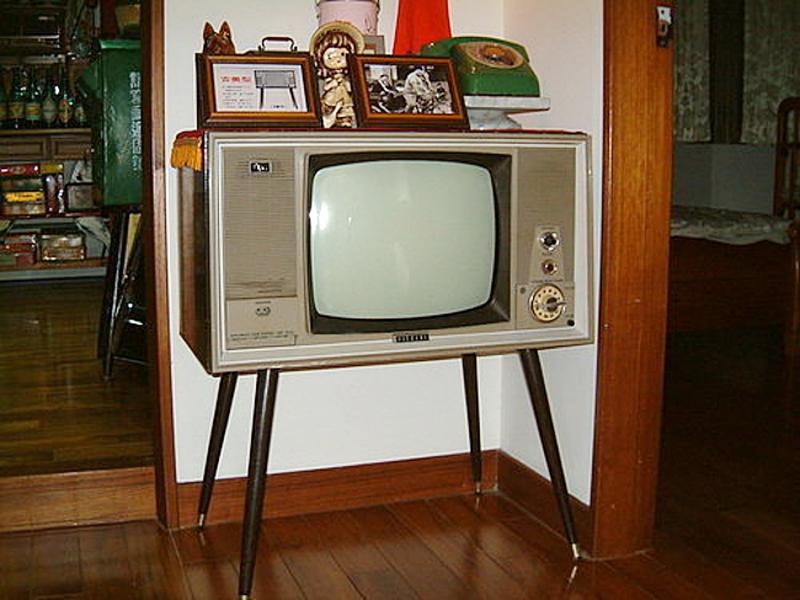June 14 to June 20
During the early 1990s, tens of thousands of Taipei residents subscribed to an illegal cable service named “Shinganxian” (新幹線). With over 140 employees, it was the largest among more than 40 similar operations in the capital.
For a relatively cheap price, people could sign up for up to 37 channels ranging from Buddhist seminars to WWE wrestling to X-rated movies. Otherwise they were limited to the government-approved “old three channels” (老三台): Taiwan Television, (TTV), China Television (CTV) and Chinese Television System (CTS), which were established between 1962 and 1971.

Photo courtesy of Wikimedia Commons
According to a 1991 Commonwealth Magazine (天下雜誌) article, an estimated one out of 10 families in Taiwan had access to these underground services, commonly known as the “fourth channel” (第四台). Even though cable was legalized in 1994, many people today still use the term to refer to the service.
The Democratic Progressive Party (DPP) launched the underground Democracy TV (民主電視台) in March 1990 to “counter the three channels’ pro-Chinese Nationalist Party (KMT) broadcasting.” The government shut it down after a month, but it persisted through more than 20 cable channels.
DPP politicians and activists continued to push for the right to establish a fourth television station. The government eventually relented in January 1995, and Formosa TV (FTV) was inaugurated in June 1997.

Photo courtesy of Wikimedia Commons
UNDERGROUND NETWORK
Although the three channels were legally private companies, they were at least partially owned and run by the KMT. TTV was the first to go on air in 1962, with the Taiwan Provincial Government as majority owner. CTV was launched in 1968 by the KMT-owned Broadcasting Corp of China, and finally CTS was born in 1971 through a joint-initiative by the Ministry of National Defense and the Ministry of Education.
As Taiwan’s economy took off in the 1960s, people had more time and money to pursue leisurely activities. The government strictly controlled the entertainment industry, but people always found a way around the rules.

Photo courtesy of Wikimedia Commons
Shinganxian founder Chen Chin-chih (陳錦池) recalls in the Commonwealth Magazine article that he was inspired during the late 1960s when he saw a large group of people huddled inside a dark room, secretly watching wrestling. “Why aren’t people allowed to watch what they want to in their own home?” he asked.
The first fourth channel operators appeared in the early 1970s, and the industry boomed. Subscription numbers continued to increase as the economy continued to surge and the fourth channel provided updated stock market information.
These operations weren’t exactly inconspicuous. The Commonwealth Magazine article notes that one in Tainan even advertised its programming in the local newspaper. The staff lived and worked in a four-story building and were even required to wear uniforms. There was still risk of being caught, however, and competing operators often formed alert networks to avoid police raids.

Photo courtesy of Wikimedia Commons
One interviewee said that they were more concerned about future legal operators than the police. The government had been looking at legitimizing cable, but at that point they appeared to be unwilling to work with the fourth-channel operators who already had the infrastructure.
In 1990, the Cable Television Promotion Association was formed to overturn the industry’s negative image and to get a say in the legalization process. They encouraged its members to stop showing X-rated productions and work towards legal licensing. One member felt bitter toward their exclusion, noting that the industry blossomed underground because “the government didn’t support it or regulate it, but society needed it.”
The Cable Television Act (有線電視法) was passed in July 1993, and in a few years, most fourth channel operators either obtained licenses, shut down or went further underground.
OPPOSING VOICE
Despite opposition parties becoming legal in 1987, the KMT still controlled the three channels as well as other media. No new stations were allowed yet, and after having their application rejected several times, the DPP tested its underground station in November 1989. The police arrived shortly after and cut the wires, but the broadcast was a success.
In March the following year, the DPP officially launched its Democracy TV channel, and less than a month later the government confiscated its equipment and arrested its staff, who received suspended sentences. The DPP responded by successfully disrupting a CTS broadcast, but they stopped short of the next step listed in a “Movement to Reverse the Media Ban” memo: “destroy existing television stations.”
The DPP continued to broadcast through its many cable channels while aggressively calling for the government to overturn its media monopoly. The KMT was slow to relent, but finally in January 1994 they agreed to allow one more free-to-air TV station.
Three companies bid for the slot, and the government approved on June 16, 1995 Formosa Television Co, which was a merger of two DPP-backed companies. The DPP pledged to stay out of its operations and financial affairs, although its board of directors included several notable politicians. Chairman Chai Trong-rong (蔡同榮) was a legislator and a once-blacklisted independence activist who helped lead the charge for media freedom.
Chai returned to Taiwan in 1990 and advocated using referendums to decide public affairs. In a 1993 meeting, he stated, “If one day the KMT holds a referendum, but there is no television station that can provide an opposing voice, then we are like a blind person fighting someone who can see.”
During a legislative session in 1995, Chai asked the Executive Yuan: “The KMT gets about 50 percent of the vote, but it has three channels. Non-KMT politicians don’t even have one. This violates the principles of democracy.” He also hoped that the station could help preserve the Hoklo (commonly known as Taiwanese) language.
Formosa TV was officially launched on June 11, 1997. Former president Lee Teng-hui (李登輝) was given the honor of pressing the broadcast button at the opening party, drawing an end to 26 years of only having three channels.
Taiwan in Time, a column about Taiwan’s history that is published every Sunday, spotlights important or interesting events around the nation that either have anniversaries this week or are tied to current events.

In the next few months tough decisions will need to be made by the Taiwan People’s Party (TPP) and their pan-blue allies in the Chinese Nationalist Party (KMT). It will reveal just how real their alliance is with actual power at stake. Party founder Ko Wen-je (柯文哲) faced these tough questions, which we explored in part one of this series, “Ko Wen-je, the KMT’s prickly ally,” (Aug. 16, page 12). Ko was open to cooperation, but on his terms. He openly fretted about being “swallowed up” by the KMT, and was keenly aware of the experience of the People’s First Party

Not long into Mistress Dispeller, a quietly jaw-dropping new documentary from director Elizabeth Lo, the film’s eponymous character lays out her thesis for ridding marriages of troublesome extra lovers. “When someone becomes a mistress,” she says, “it’s because they feel they don’t deserve complete love. She’s the one who needs our help the most.” Wang Zhenxi, a mistress dispeller based in north-central China’s Henan province, is one of a growing number of self-styled professionals who earn a living by intervening in people’s marriages — to “dispel” them of intruders. “I was looking for a love story set in China,” says Lo,

It was on his honeymoon in Kuala Lumpur, looking out of his hotel window at the silvery points of the world’s tallest twin skyscrapers, that Frank decided it was time to become taller. He had recently confessed to his new wife how much his height had bothered him since he was a teenager. As a man dedicated to self-improvement, Frank wanted to take action. He picked up the phone, called a clinic in Turkey that specializes in leg lengthening surgery — and made a booking. “I had a lot of second thoughts — at the end of the day, someone’s going

Aug. 25 to Aug. 31 Although Mr. Lin (林) had been married to his Japanese wife for a decade, their union was never legally recognized — and even their daughter was officially deemed illegitimate. During the first half of Japanese rule in Taiwan, only marriages between Japanese men and Taiwanese women were valid, unless the Taiwanese husband formally joined a Japanese household. In 1920, Lin took his frustrations directly to the Ministry of Home Affairs: “Since Japan took possession of Taiwan, we have obeyed the government’s directives and committed ourselves to breaking old Qing-era customs. Yet ... our marriages remain unrecognized,